This guide generally covers questions that may be asked in the theory test and the question, what’s the difference between green and white road signs.
Excluding motorways, primary roads that form a network between major towns are called primary routes. Primary roads always start with the letter ‘A’ and primary route direction signs are always green, with white lettering and yellow route numbers.
Other roads that are no considered primary routes, even other ‘A’ roads are referred to as non-primary routes. These may be roads that connect villages for example. Non-primary routes have white direction signs with black lettering and route numbers.
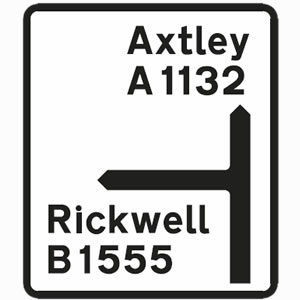
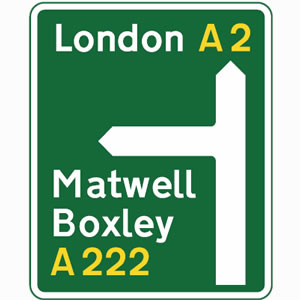
Green and white direction signs
The green sign to the right illustrates a junction ahead between two ‘A’ road primary routes.
The white sign to the right illustrates a junction ahead is between two non-primary routes. ‘A’ road primary routes can be displayed on white direction signs as can be seen below. the colour of the sign depends on the whether it is being displayed to motorists on a primary or non-primary route.
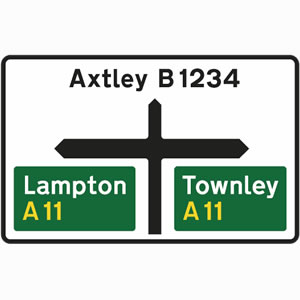
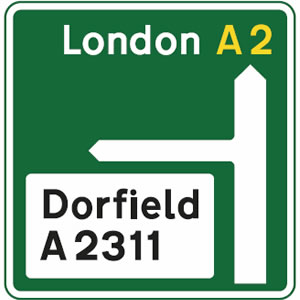
Primary and non-primary route signs
The green sign to the right is being displayed to motorists on a primary route (A2). The junction to the left is a non-primary route and is displayed in white with black text. The white sign is being displayed on a non-primary route indicating primary route junctions to the left and right ahead.
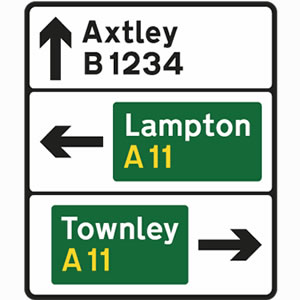
Stack and lane road signs
Stack road signs such as the sign illustrated to the right are often used at simple junctions such as a crossroads. Such signs range from a single to multiple stacks. Other directional signs may be used to indicate which is the appropriate lane to use for a particular destination.
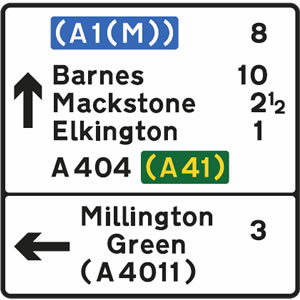
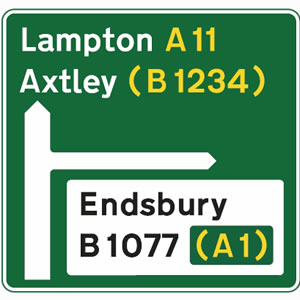
Information contained on direction signs
The route numbers on directional signs that are in brackets are the roads that will be reached by following the initial route indicated on the sign. Some signs may indicate the distance to a destination in miles. Fractions of a mile may be shown for distances less than 3 miles.
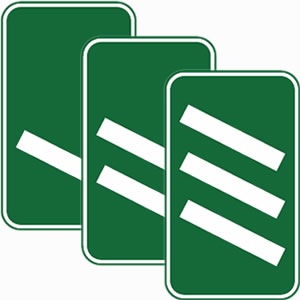
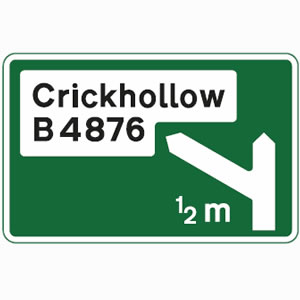
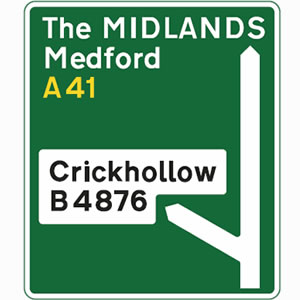
Direction signs on dual carriageways
Dual carriageways are usually primary routes and therefore use green signs. Due to the high speed nature of dual carriageways, direction signs are placed usually 1⁄2 mile before the exit deceleration lane. This distance may occasionally vary from 1 mile or decreased to 1⁄3 of a mile or 2⁄3 of a mile.
Followed by the initial direction sign located some distance from the junction, countdown marker signs are placed at the side of the road to alert motorists of the impending junction. The marker sign with three dashes is placed at 300 yards, two dashes at 200 yards followed lastly by the single dash sign at 100 yards.
Finally the last direction route sign is placed at the start of the deceleration lane or slip road. For further information and a guide on how to drive on these types of roads, see dual carriageways in the driving test tips section.
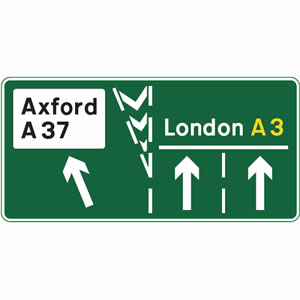
Dual carriageway junction exit signs
As with other primary route signs, dual carriageway junction exit signs use a white background for non-primary routes that leave the carriageway via an exit deceleration lane or slip road.
Road signs test quiz
Once you feel you have studied the various UK road signs and their meanings enough, take the driving theory test knowledge quiz test to see how many signs you know.



RELATED Road Signs and Theory Test Guides
- Traffic lights and how they work
- Warning road signs
- Order road signs
- Blue road signs
- Brown road signs
- White road signs
- Speed limit signs
- Low bridge signs
- Parking and no parking signs
- Bus lane and bus stop signs
- Road works and temporary signs
- Road markings and lines
- Road sign theory test quiz
- Road markings theory test quiz
